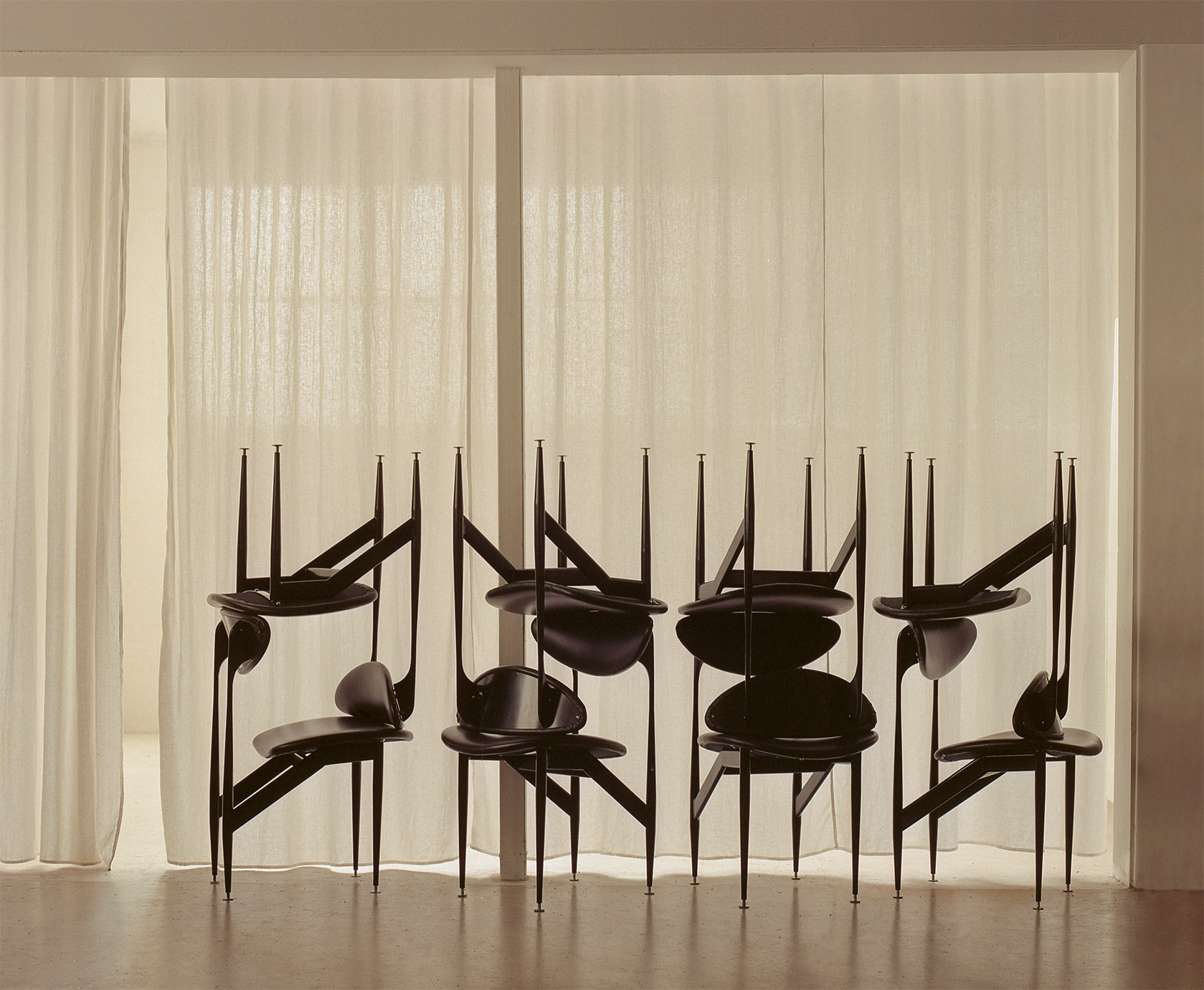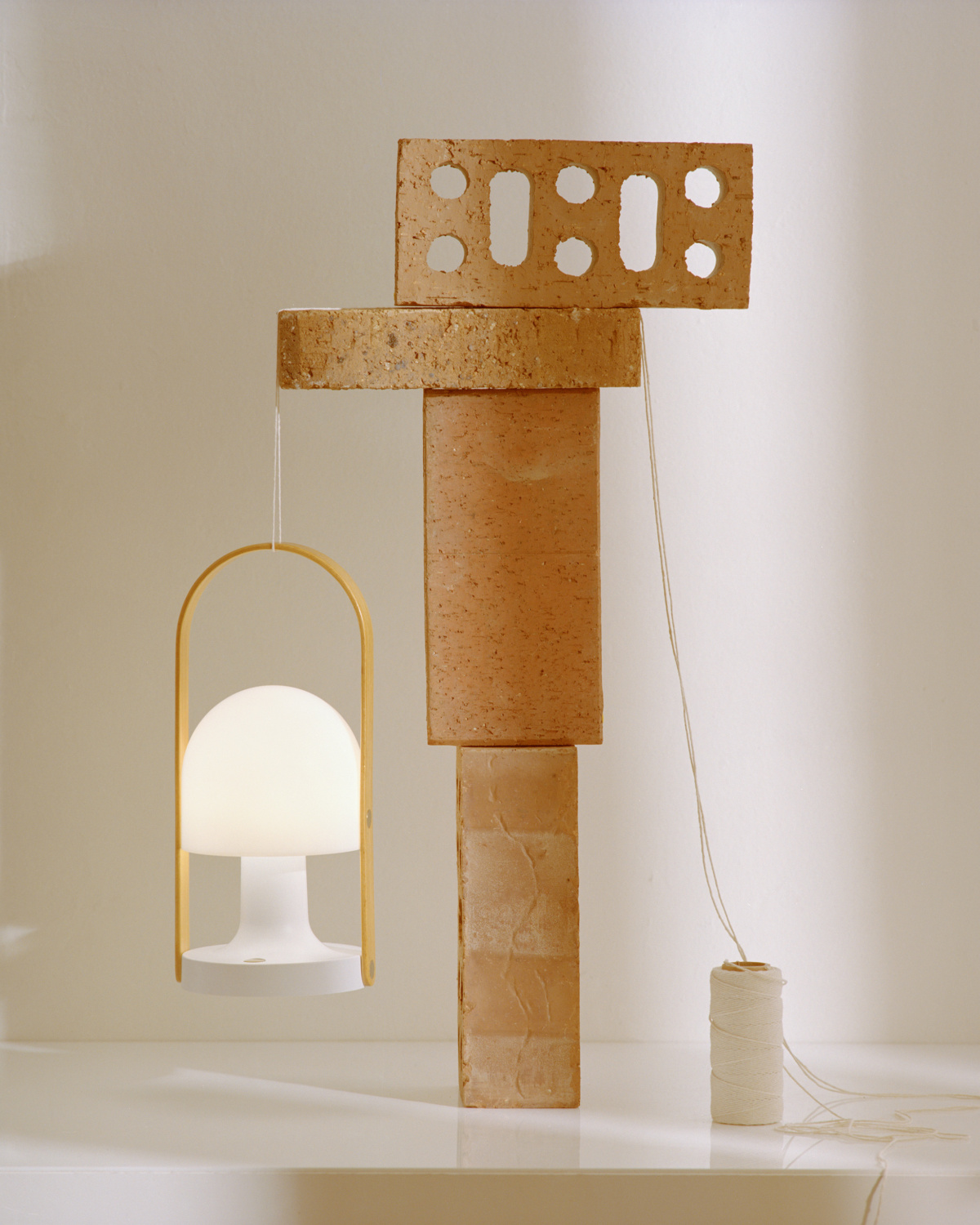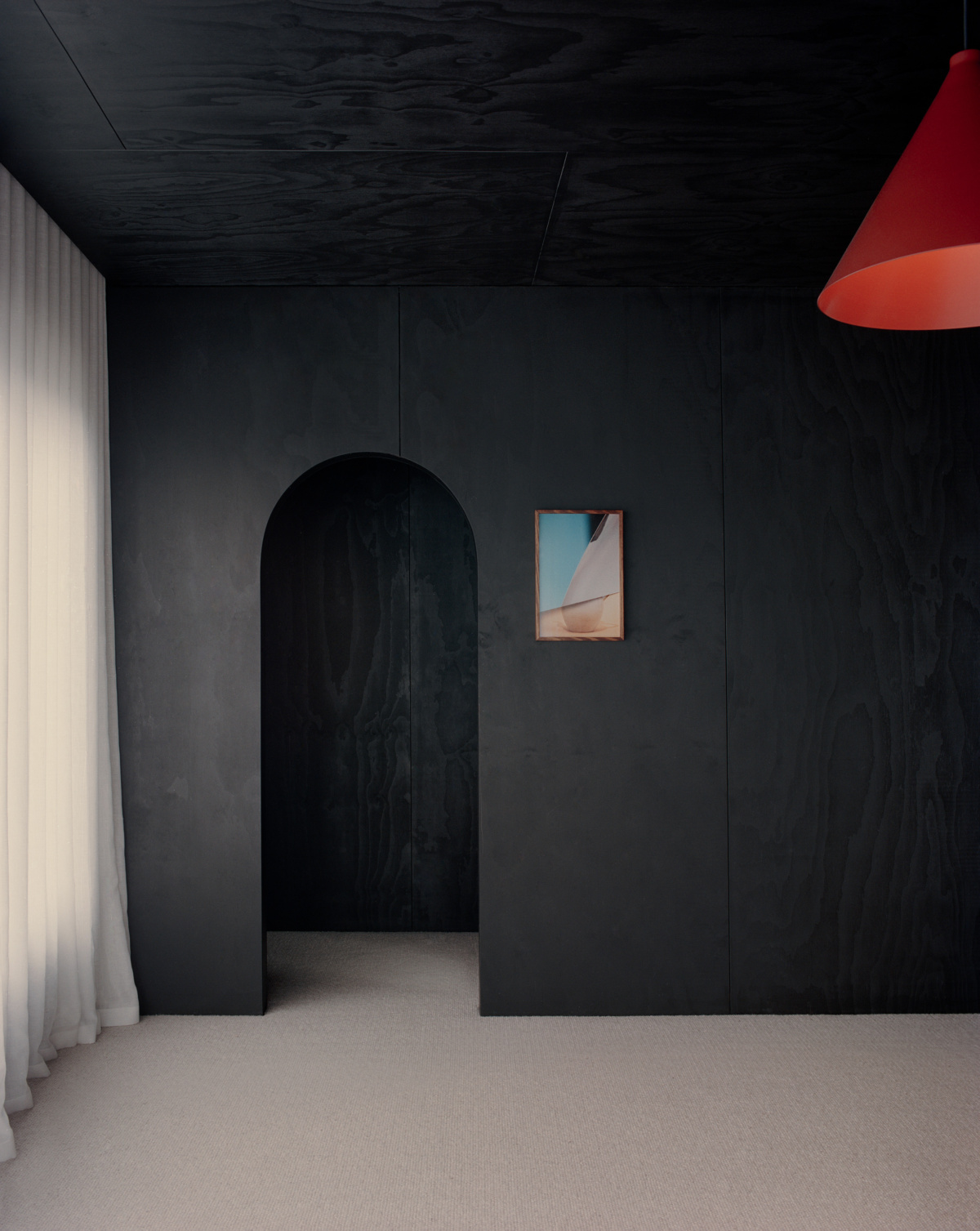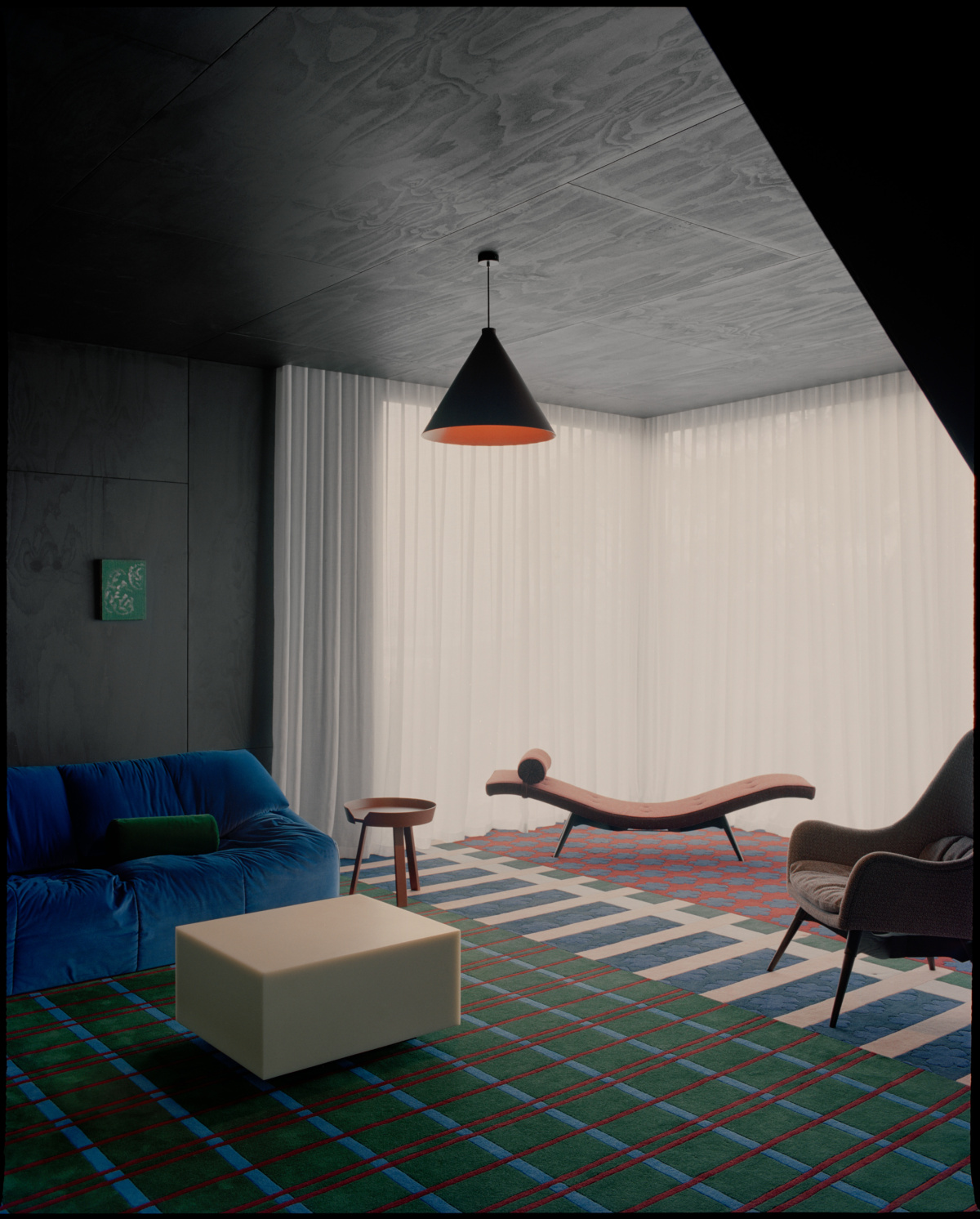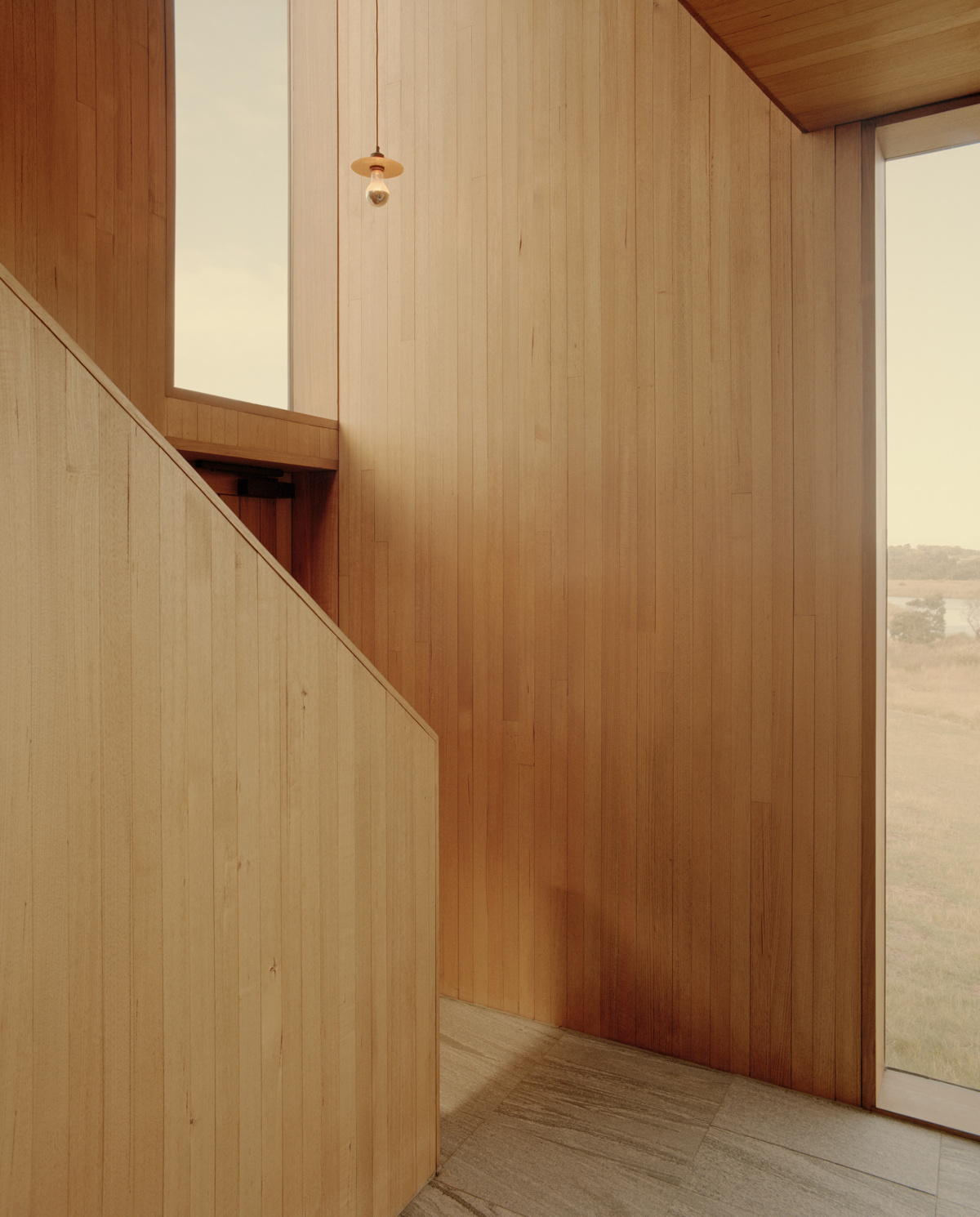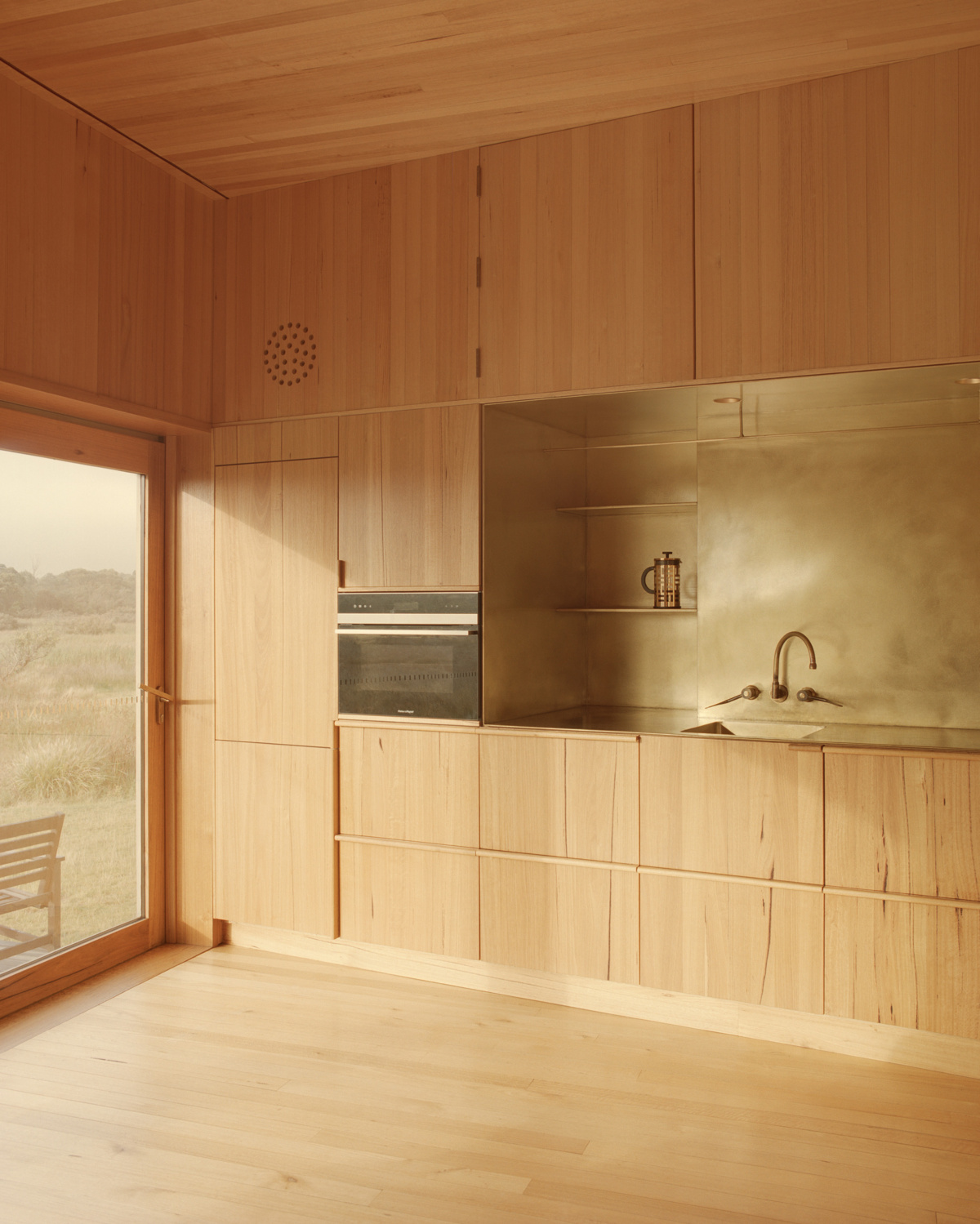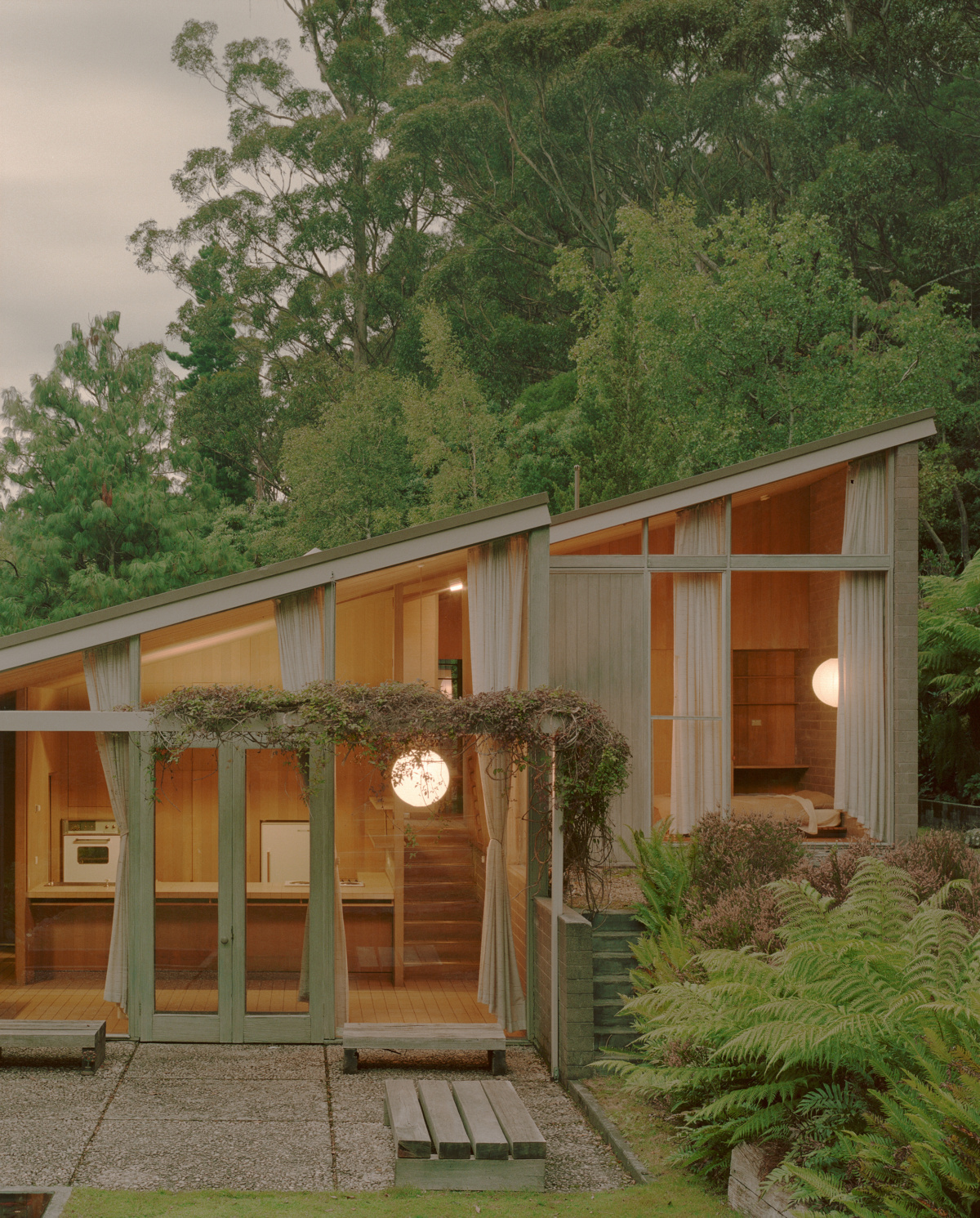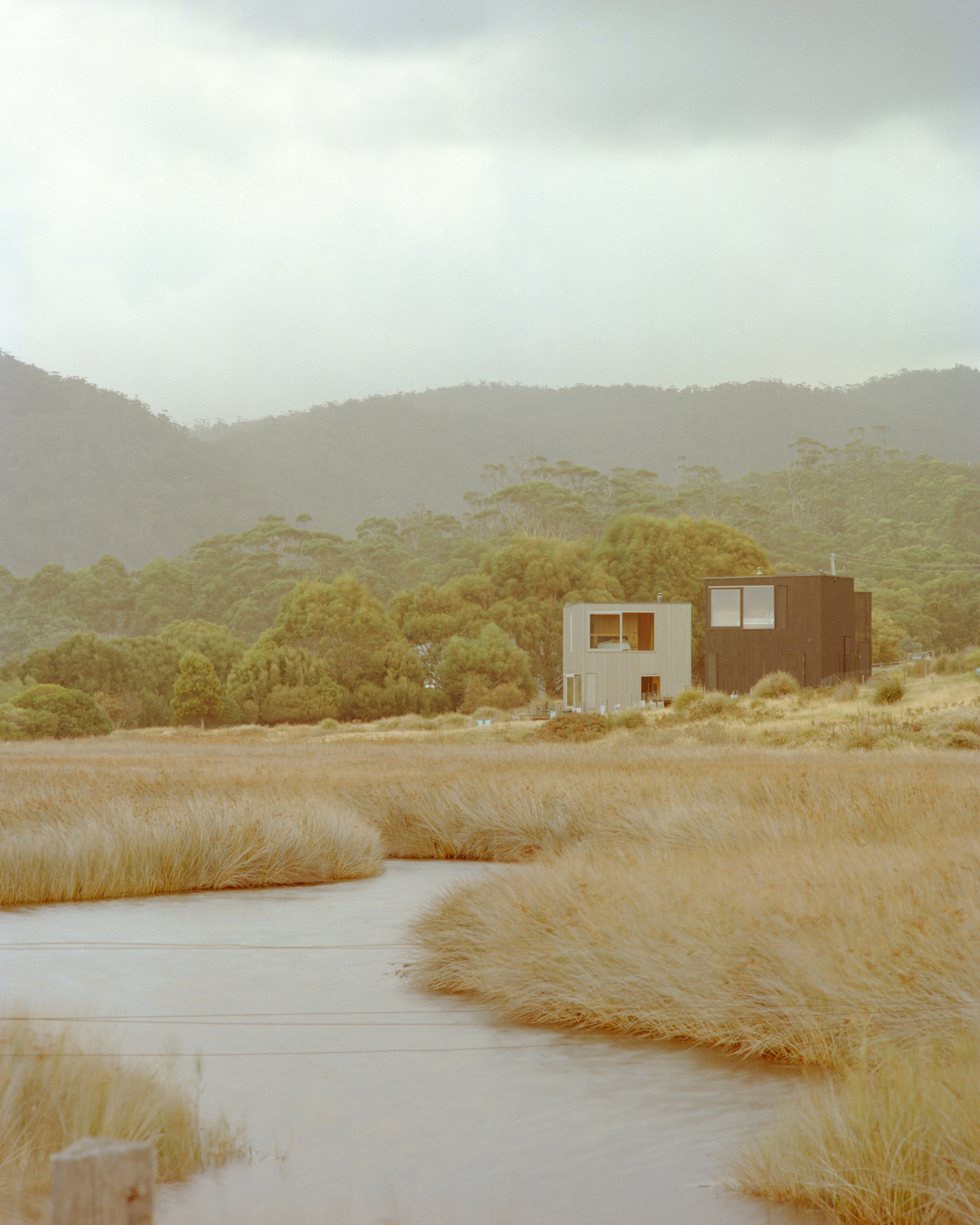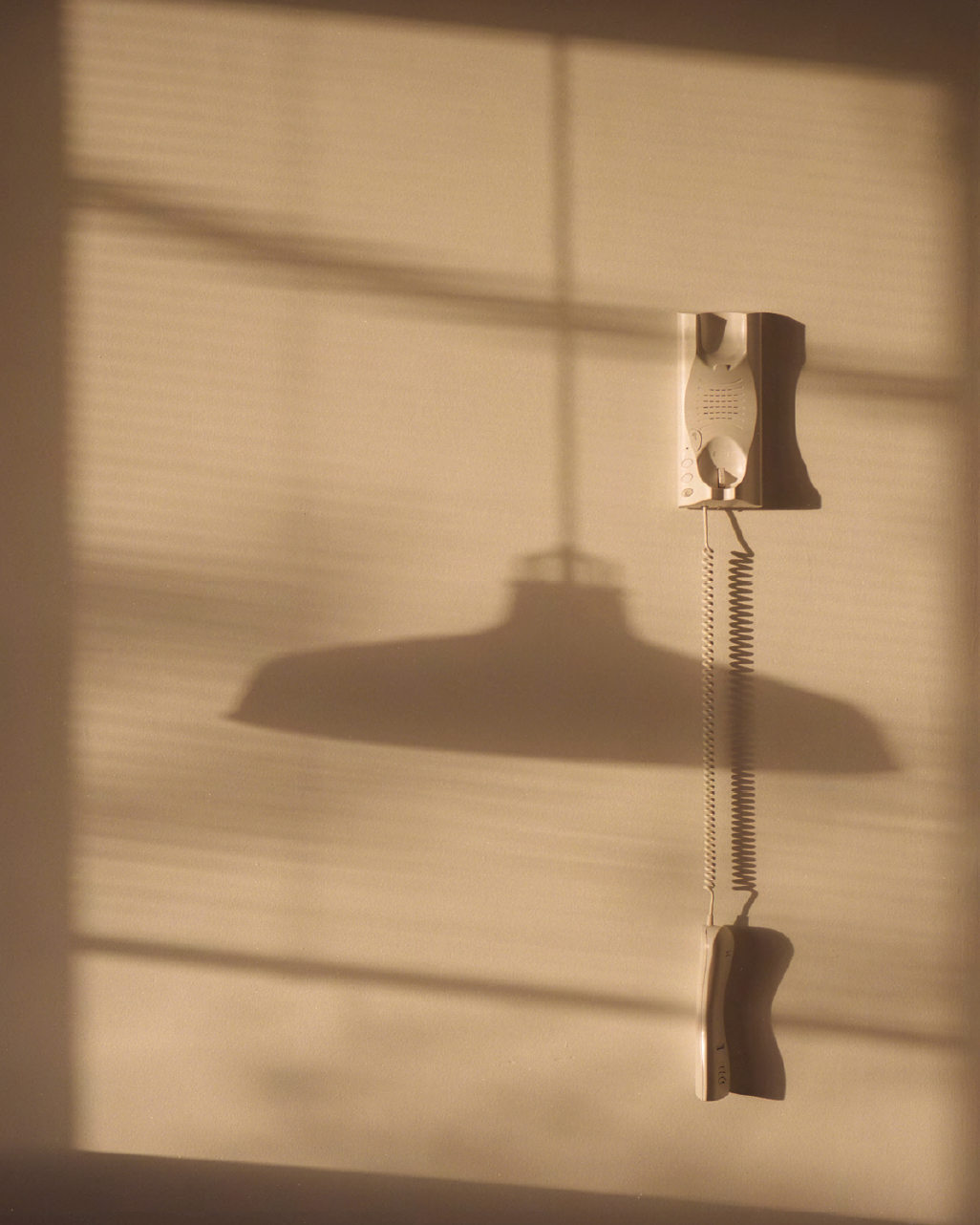Theater, fashion, music—it can all be so loud. Photographer Pier Carthew spent many years as an actor, but he was craving something quieter when he went back to study his passion for photography full-time. Buildings and furniture, he laughs, don’t talk back, but they did speak to him.
He moved into photography full-time in his 30s—photographing the actors and creatives around him before dedicating his work to interiors and architecture. He was drawn to empty rooms, to simple chairs, to the way the light shone through a window and hit the floor. “I’m always looking for a softer feeling and light that is maybe a little bit ethereal even,” he says. “I’m not going for anything that is particularly grounded in reality.”
- Commissioned work for AJAR furniture—a Melbourne-based team of architects, interior designers, and industrial designers.
- Pier collaborated with interior stylist Jess Kneebone to capture this work—their first of many together. “It’s a really beautiful way of shooting an interior that almost suggests it’s the moment before a space has been lived in, or the moment before a piece is about to be revealed for the first time. It has a quietness about it, which is another thing I’d love to bring more into the field.”
Pier photographs the things he finds beautiful, things that feel warm and that he posits many of us may want to be surrounded by more in this world. He avoids harsh sunlight in interiors, and he shoots on film. “Digital is so sharp and crisp and has such hard edges whereas with film the light bleeds from dark to light. It’s quite subtle.”
Pier’s work is in stark contrast to the photography trend of busy architecture scenes showing a space in use with people milling about or wide shots of overstuffed interior spaces, or even drone photography. You won’t find any people hurrying about in his photos, and no blurred neon lights in front of an impressive building. Instead he focuses on particular objects within a space, playing with the shadows and forms around them. He captures small, detailed moments in fine art style.
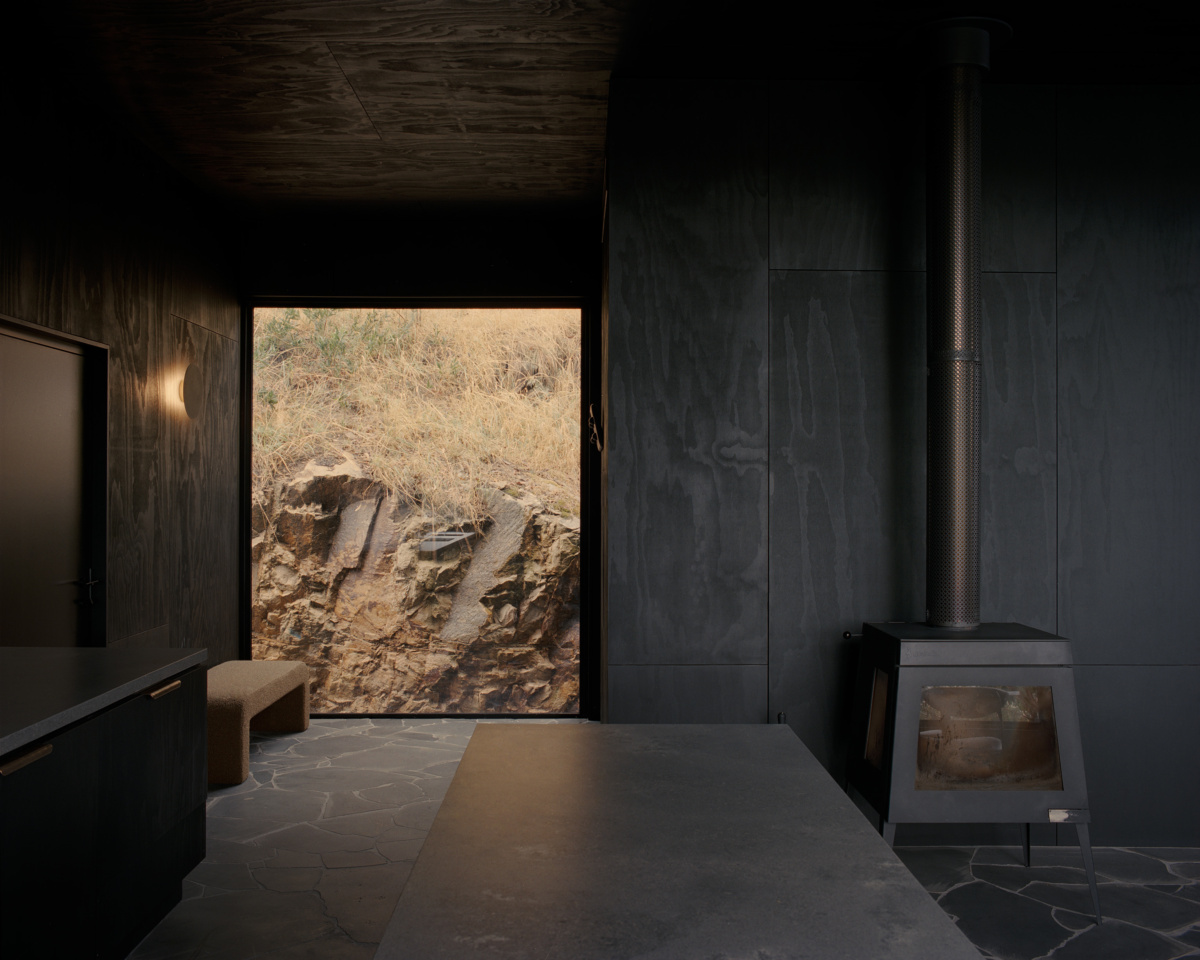
“I try to avoid shots that are too wide or that reveal too much. I feel like these shots somehow kill the magic of a space by trying to extend the field of view beyond what the eye would naturally perceive,” Pier says. Photo shot for Slow Beam—a guest house in Tasmania.
“A lot of interior and architectural work seems to be preoccupied with seeing everything in one frame. I always want to see less and less because I feel like when you do see everything it takes the magic out of it,” Pier says. “It’s the tighter frames and the smaller moments that have more mood. They are a little bit more mysterious.”
- Photo shot for Slow Beam—a guest house in Tasmania.
- Photo shot for Slow Beam—a guest house in Tasmania.
It took Pier some years to be able to take the kinds of photos he wanted. While he’s always had a passion for photography—“I was always obsessed with film cameras really”—the transition from actor to photographer was not overnight. He was on tour with a theater production when the realization struck him. “It was a great, international production, and I was taking a lot of street photographs and oddly attracted to buildings, which is what I’ve gravitated toward in my professional life now. I was an actor, 32, coming home to no job and thinking, ‘I’m not really that passionate about this anymore.’ It’s such a hard game. It was good in my 20s, but it was time to kiss that goodbye,” he says.
He laughs when he thinks about the risk he took moving to photography full-time. “But relative to acting it is actually quite stable and relatively easy to get work—even though it wasn’t always exactly the kind of work I wanted to be doing.” He started by shooting what he knew best—theater productions, some film shoots, and even portraits for actors, before going back to school to study photography part-time for three years at the Photography Studies College in Melbourne. “The best part about that was it really forced me to produce work and find some direction in my photography.”

Dorney House at Fort Nelson, designed by James Henry Esmond Dorney
Now in his early 40s, Pier is grateful he’s been able to turn his passion for film photography into a full-time career. “It’s a blessing and something I wasn’t sure I’d be able to do,” he says. Today he runs a successful studio from inside a popular imported furniture store—Nord Modern, full of beautiful Danish and European designs. He rides his bike a short way to work, where he started to both shoot for the store to support his business and make his own creative work, inspired by a chair here or a chest of drawers there. The store is packed with furniture, but he focuses on capturing the quietest of moments, rather than the full picture.
Pier’s work has a soft, painterly quality to it that he attributes in part to growing up in a creative home. His mother is a painter, and his parents ran a hand-painted silk scarf business in the Adelaide Hills in South Australia. He and his sister helped. “I used to paint the undercoats of the silks,” he says. “I’m not sure exactly how that aesthetic transferred. Maybe by osmosis somehow.”
- Inside a residential design by Taylor & Hinds Architects
- Inside a residential design by Taylor & Hinds Architects
He admires the work of other young photographers like Simone Bossi, in Europe, who he says blurs the line between architectural photography and art photography. Simone is an Italian photographer who worked as an architect in Italy, the Netherlands, and Switzerland from 2008 to 2010 before he decided to start his career as a self-taught photographer. “Most of his images are quite minimalist, quite abstract in many ways, and very soft,” Pier says.
In a room of 15 pieces of furniture and 60 artworks Pier says he would much rather capture one really beautiful chair—a nod to what that room might be—or one lamp in an overstuffed bedroom. “It’s enough to say that it’s a bedside lamp so therefore this is where you might sleep. I suppose I like leaving as much as possible to the imagination.”
- Fern Tree House, Hobart designed by David McGlashan and built in 1969
- House designed by Taylor and Hinds Architects—a Tasmanian-based architecture practice
Looking ahead Pier has some special projects he also wants to tackle—like one where he photographs the ugliness of “luxury” buildings. “It’s a bit left field actually. It does involve buildings, but not buildings I would consider beautiful,” he laughs. “It’s an observation on the dream home and what that means for different people.” He’s also enjoying working for Melbourne-based architecture firm Ritz & Ghougassian. “They do some really great work,” he says.
While Pier’s move to shooting almost exclusively architecture and interiors is relatively new (it came about during Covid), he’s certainly picking up steam. He says he also stays busy chasing a toddler. In an ideal week he’d like to spend two days shooting and have the rest of that time for post-production and administrative work. “Of course it doesn’t always work like that. I’m really particular about the light that I shoot in, so there’s rescheduling going on all the time,” he says. “And sometimes I break up the interior and architecture shoots so I’ve got the best of the evening light and then the best of the morning light. Then you throw in a baby, and it gets complicated.”
He looks forward to the studio work he does, capturing objects and still lifes. “That is nice to be able to have a bit more control and just work a 9 to 5.”
- Lamp from AJAR furniture. “The time and consideration that the shots allow are perfect for shooting with film,” Pier says.
- Pier’s work focuses on objects within a space, playing with the shadows and forms around them. “The shot of the phone was a candid snap in my apartment when the light happened to be perfect,” he says.
A version of this article originally appeared in Sixtysix Issue 10 with the title “Pier Carthew.” Subscribe today.
